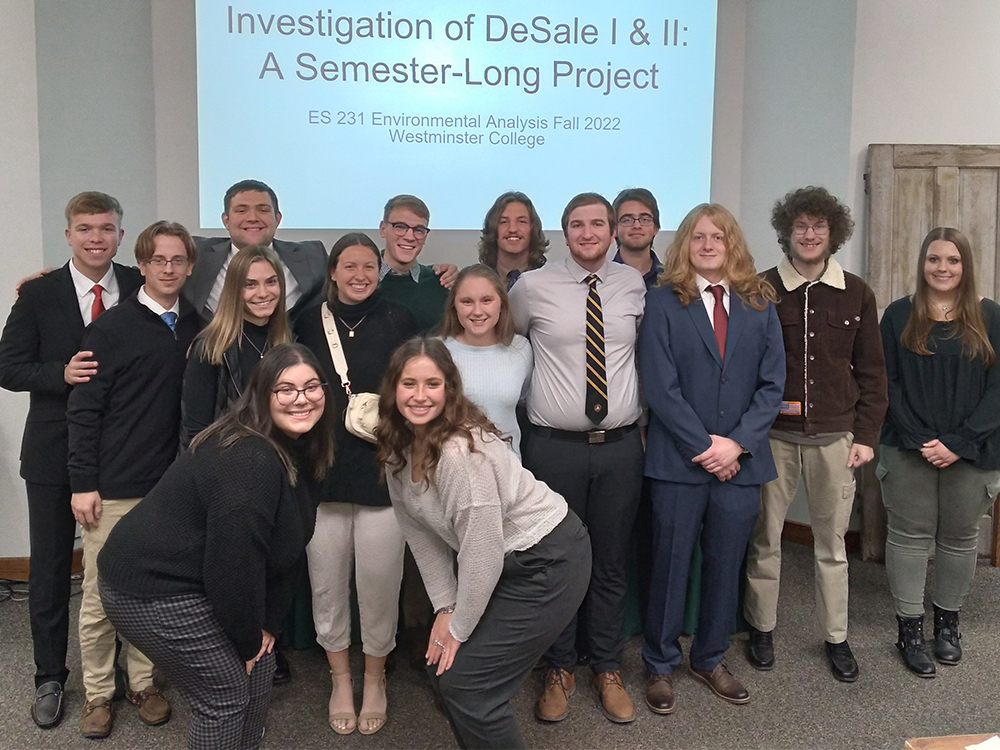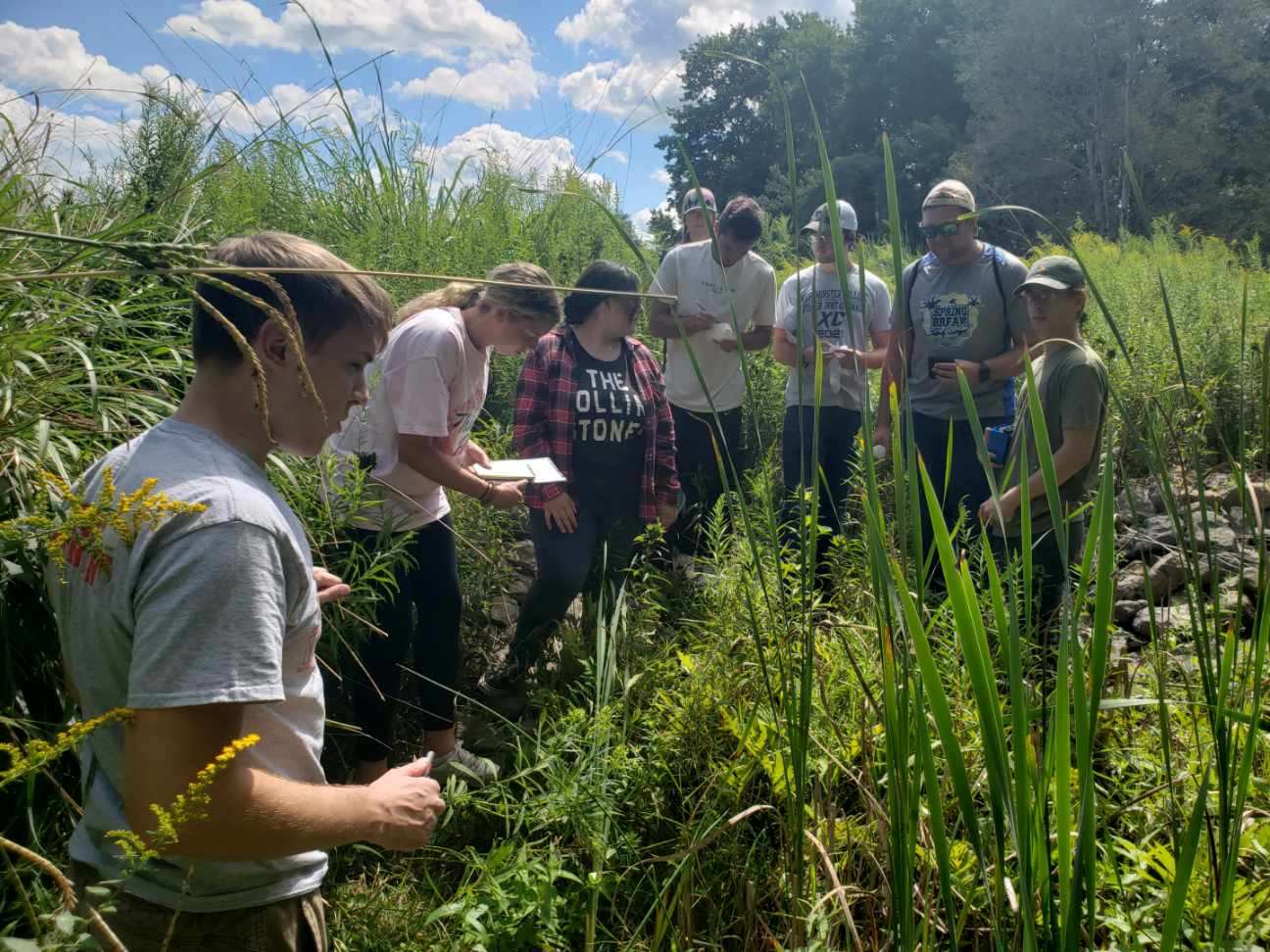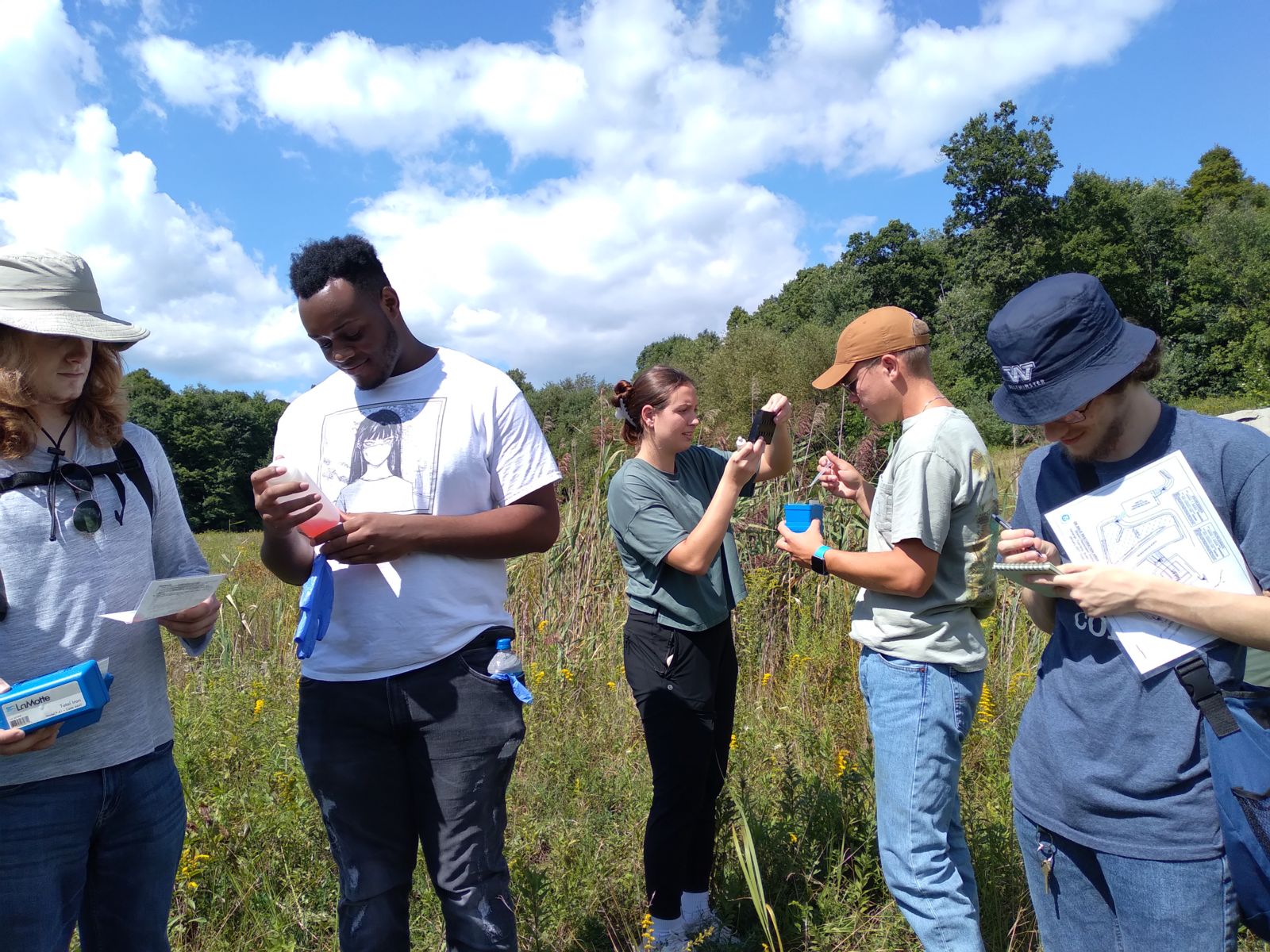News & Events
Students present semester-long project work to Slippery Rock Watershed Coalition
Posted on Monday, December 12, 2022
 Students enrolled in Westminster College’s ES 231 Environmental Analysis course presented findings of their semester-long work at the November meeting of the Slippery Rock Watershed Coalition (SRWC) held at the Jennings Environmental Education Center.
Students enrolled in Westminster College’s ES 231 Environmental Analysis course presented findings of their semester-long work at the November meeting of the Slippery Rock Watershed Coalition (SRWC) held at the Jennings Environmental Education Center.
The students, primarily environmental science and chemistry majors, studied various water quality parameters for abandoned mine drainage samples that had been collected during a field trip to the DeSale passive treatment site in August at the start of the semester.
The study was part of a semester-long service learning project done in collaboration with the SRWC. Three members of the SRWC met students during their field trip at the DeSale site where abandoned mine drainage is treated using natural processes involving limestone bed, wetlands and settling ponds.
 The SRWC seeks funds to install the passive treatment sites, but it is difficult to secure funding for routine monitoring of the sites. Results from this student project help the SRWC know how well the treatment process is working. During the month-long investigation, students studied alkalinity, buffer capacity, iron content and dissolved organic matter. The results indicate that the system is working to reduce acidity and metal concentration.
The SRWC seeks funds to install the passive treatment sites, but it is difficult to secure funding for routine monitoring of the sites. Results from this student project help the SRWC know how well the treatment process is working. During the month-long investigation, students studied alkalinity, buffer capacity, iron content and dissolved organic matter. The results indicate that the system is working to reduce acidity and metal concentration.
“The students had the opportunity to use analytical chemistry in a real-world application,” said Dr. Helen Boylan, professor of the course and director of the Center for the Environment. “What’s really great about this project is that the student results matter.” The SRWC uses the student results to make decisions about their treatment sites.
Cliff Denholm, an environmental scientist with Biomost Inc. and member of the SRWC, indicated that it was a rewarding experience working with the Westminster students.
 “Their engagement in the process—from field sampling to presentation—was evident, as was their preparation and enthusiasm to learn,” he said. “It was great to see the students’ hard work come to fruition through the final lab analyses and presentation of their work.”
“Their engagement in the process—from field sampling to presentation—was evident, as was their preparation and enthusiasm to learn,” he said. “It was great to see the students’ hard work come to fruition through the final lab analyses and presentation of their work.”
More Stories



